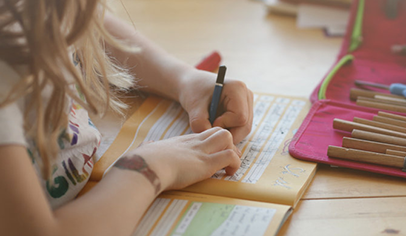15 Ways to Encourage Handwriting at Home
Check out these fun ways to encourage handwriting at home!
January 17, 2022

rboe/123RF
Happy National Handwriting Month!
Did you know National Handwriting Day is celebrated on January 23 annually, on John Hancock’s birthday? It is celebrated on John Hancock’s birthday because he has the most infamous signature.
Once a year, handwriting gets the spotlight, but the remainder of the year, it slowly lurks in the shadows.
Think about it: does your child learn handwriting? While it may not seem like a “big deal” as we rely more on technology, imagine a world with no handwriting or even signatures. Our world is changing daily, and a future without handwriting may not be as unlikely as it may seem. Afterall, we don’t write with petroglyphs anymore.
While we do not know the future of handwriting in our world, and while that may be generations away, the uncertainty of handwriting in the classroom is already here. Teachers may not be able to fit handwriting into their schedule with all the ever-changing demands and curriculum requirements, but the good news is there are ways you can work on and encourage (beyond celebrating one day a year) handwriting at home:
1. Write on windows with dry erase markers
2. Write in fresh, rolled-out Play-Doh with a toothpick
3. Laminate worksheets to write on with a dry erase marker and re-use them—there are tons of great, free writing worksheets online
4. Write on rolled-out Play-Doh with markers
5. Write in sand, sugar, salt, or flour spread out in a bin with a pencil or paintbrush
6. Trace letters onto one another’s backs, and guess what letter is being traced
7. Write letters on the wall in the dark with a flashlight
8. Write on the sidewalk with sidewalk chalk
9. Write with a paint brush and water on different surfaces (fence outside, chalkboard, sidewalk, etc.)
10. Write in shaving cream or whipped cream on a table, tray, or plastic tablecloth
11. Make sensory bags and write on them (for example: fill a bag with shaving cream, write on the bag with marker, and have your child trace it with a dry erase marker, or simply lay the sensory bag flat on a table so your child can write letters with their fingers)
12. Make crafts that require writing (cards, Valentine’s, letters, etc.)
13. Create letters by putting dish soap and a very small amount of water in a bin, use a paint brush or finger to write in the dish soap
14. Write on small chalkboards
15. Write on small dry erase boards
Get your child's exact back‑to‑school supply list, right from their teacher.



